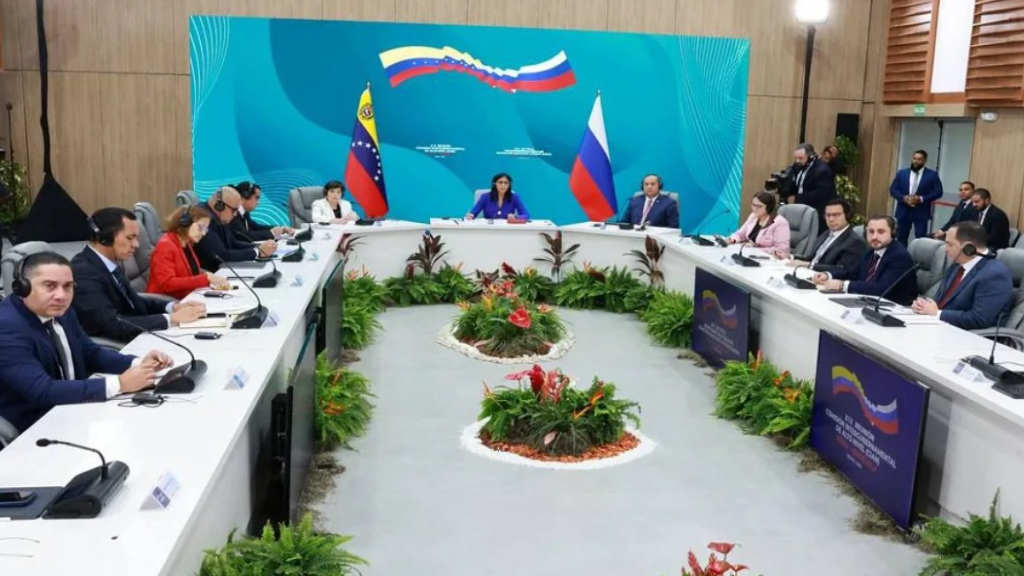The Russian President Vladimir Putin has been speaking at the Russian Energy Week forum in Moscow, and stated as part of his speech that the BRICS member nations are jointly developing a payment and settlement framework to be used for trading within the group.
Putin stressed that supplies of Russian oil and gas to ‘friendly’ countries allow them to ensure economic stability and compete more successfully in the global market. However, he also acknowledged that “certain difficulties” remain when it comes to these countries making payments for Russian energy. Russia had been disconnected from the SWIFT international banking system as part of financial sanctions imposed on Moscow by the West over the Ukraine conflict.
Settlement in National Currencies

An alternative system, he stated, was already underway in terms of development. ”As part of our cooperation with BRICS countries, we are working to create our own payment and settlement system. This will allow member states to create conditions for the effective and independent servicing of all foreign trade amongst themselves. Russia is already actively switching to the use of national currencies in trading with BRICS countries and our partners are extremely interested in this.”
The share of the Russian Ruble in the country’s total foreign trade operations has increased almost threefold between 2021 and 2023, Putin stressed. In the first half of this year, it stood at 39.4%, he said. In terms of use in Russian exports, to Europe it has grown to nearly 67%.
As the current chairman of BRICS, Russia is hosting the bloc’s annual summit in Kazan from October 22 to 24. The BRICS includes Brazil, Russia, India, China and South Africa along with Iran, Egypt, Ethiopia and the UAE. Multiple other countries, including trillion-dollar economies such as Indonesia, Malaysia, Nigeria, Saudi Arabia, Thailand, and Turkiye have all expressed official interest in joining.
Blockchain-Based Payment System

Rather than a BRICS currency, the plans are to ultilize a BRICS blockchain-based payment system. Known as the ‘BRICS Bridge Multisided Payment Platform’, it would connect member states’ financial systems using payment gateways for settlements in central bank digital currencies.
The planned system would serve as an alternative to the SWIFT international cross-border payment platform, operated by the US-controlled, EU based ‘’Society for Worldwide Interbank Financial Telecommunication” which is dominated by US dollars.
According to the Kremlin, the goals are to create an independent BRICS payment system, based on state-of-the-art tools such as digital technologies and blockchain. It also needs to be convenient for governments, businesses, and the resident citizens as well as cost-effective and free of politics.
BRICS Currency

There have also been discussions about the emergence of a BRICS currency. Andrey Mikhailishin, head of the task force on financial services of the BRICS Business Council, detailed this as a top project under consideration, being a common unit of account. It is currently referred to by BRICS members as “The Unit.”
The value of the common unit of account would be pegged 40% to gold and 60% to a basket of BRICS member’s national currencies. The BRICS Business Council considers The Unit a “convenient and universal” instrument, since it could be converted into any national currency.
Earlier this month, the New York-based Nasdaq stock exchange warned in an article that should the BRICS nations establish a new reserve currency backed by a basket of their respective currencies, such a move “would likely significantly impact the US dollar, potentially leading to a decline in demand, or de-dollarization. In turn, this would have implications for the US and global economies.” In the article, Nasdaq also suggests several strategies that can be adopted to capitalize on these trends – including “investing in assets denominated in currencies other than the US dollar.”
BRICS Ratings Agency

A BRICS ratings agency, independent from Western agencies such as Moodys, S&P and Fitch, is also on the agenda. All Western ratings agencies exited the Russian market in 2022, making performance evaluations on Russian companies extremely difficult to verify and hence depressing their projected values. Both Russia and China had also complained that Western agencies were deliberately pressurized to undervalue their businesses so as to deflect capital investment, or at least make it more expensive to raise investments. A BRICS ratings agency however needs to be seen as transparent and could involve the BRICS New Development Bank.
Expected Developments

While the introduction of a BRICS currency such as The Unit may be some way off, its introduction cannot be ruled out. The BRICS nations will be studying carefully any impact on the US dollar as most (with the exception of Russia) still possess substantial US dollar-denominated assets. All, however, are looking to reduce these holdings and have been actively doing so, especially China.
More likely to emerge sooner rather than later is the ‘BRICS Bridge’ payment system. Both China and Russia already possess their own internal payments systems, CIPS and SPFS, and it is already understood that these are compatible. Technical work and assessment is undoubtedly taking place to assess the security and compatibility of other BRICS members systems. What will be important is a unified platform, that stands separately from internal platforms. While the West has indicated it is prepared to disconnect national currencies from SWIFT – both Russia and Iran have been targeted in this way – it is a different matter when contemplating the multi-disconnection of countries such as China, India, Brazil and the UAE.
Trials between Russia and China has already been going on in terms of digital platform transactions, while China’s use of digital transfers as part of its global trade has nearly reached US$1 trillion over the past 18 months. Clearly, the technology exists and works. The immediate task is to ensure the highest levels of security – such a system would be an obvious target for Western hackers – and to integrate other BRICS members internal platforms onto the BRICS Bridge. This may also require some changes to national legislation, which can take time.
However, with China and Russia poised to go ahead in digital trade from mid-2025, acting in some way as a trial for the rest of BRICS, we see the potential of a BRICS financial trading platform as becoming a reality by 2026/27. The proposed BRICS currency, the Unit, may then be operational by 2030. If correct, it will mean that Western sanctions upon Russia will gradually begin to lose their effectiveness from mid next year as alternative systems and new technologies surpass the relative crudeness of SWIFT disconnection.
There are likely to be spillover developments as well. Should the BRICS Bridge prove successful, this can be expected to spur similar economic blocs into doing the same thing. SWIFT will probably decline to become a Western-only financial service, while the role of US and EU intermediary and corresponding banks will also diminish. With that comes an inevitable move away from the US dollar and euro, and a new age of sovereign currencies – and their values – being determined by regional, rather than international markets.
Further Reading






